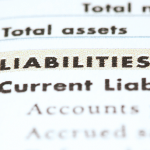For the past several years, environmental, social and governance (ESG) factors have figured prominently in the investment decisions of institutional investors, pension funds and shareholders. The reason is the potential impact of these factors on the value of their investments.
Executive Summary
The insurance industry is in a singular position to effect positive ecological change, heal social inequities in the workplace, and enhance corporate behaviors by neither underwriting or investing in companies that harm the environment, engage in anti-competitive corporate practices, and lack diverse representation of women, people of color and LGBTQ individuals in management ranks. How are they doing with all of that? Veteran journalist Russ Banham asked four assessors about ESG performance, finding that P/C insurer scores on the “E” factor are lagging in terms of who they insure and where they invest.Property/casualty insurers and reinsurers also are large institutional investors. They also underwrite companies with ESG-related risks that may adversely affect their financial condition and creditworthiness, the case with coal mining entities and coal-fired plants that increase air pollution and contribute to climate change.
In effect, the insurance industry is in a singular position to effect positive ecological change, heal social inequities in the workplace and enhance corporate behaviors by neither underwriting or investing in companies that harm the environment, engage in anti-competitive corporate practices, and lack diverse representation of women, people of color and LGBTQ individuals in management ranks.
Given the industry’s clout to move the needle on these issues, how is it doing?
To help answer this question, Carrier Management reached out to four firms that analyze, measure and report on ESG performance: ISS Corporate Solutions, Sustainalytics, S&P Global and AM Best Co. We specifically wanted to know how deeply ESG policies and practices are embedded across the industry, where companies are excelling and falling behind, and how well the industry is performing versus industry sectors.
On the whole, the feedback was generally positive, with the industry at “different stages of integrating ESG factors into their businesses,” said Maura McGuigan, director, credit rating criteria at AM Best Co. “We are definitely seeing a heightened awareness around ESG.”
The other analytical firms provided similar comments, with the industry’s ESG performance scoring generally about or above average compared to other industry sectors—including environmental performance.
“In terms of managing their own environmental exposures and approach to climate change, U.S. insurers and reinsurers are above average,” said Sercan Soylu, associate director of ESG at Sustainalytics, the largest independent provider of ESG research and ratings. “The impact of environmental concerns on insurance companies is not that high compared to other industries like oil and gas.”
This makes sense, given that insurers and reinsurers do not produce products that harm the environment. Where the industry is vulnerable in terms of environmental performance is the environmental practices and policies of insureds. Companies that harm the environment or the health of people are likely to incur stiff regulatory fines, multimillion-dollar class action liability lawsuits and public condemnation, boomeranging to impair the balance sheets of insurers and reinsurers.
“Since insurance is intangible, you wouldn’t think that something tangible like climate change would affect the business performance of an insurance company,” said Nicole Bouquest, associate director at ISS Corporate Solutions, a subsidiary of Institutional Shareholder Services, a provider of ESG and other data analytics services. “Yet it can, if the insurer invests in or provides insurance to a company found to have harmed the environment.”
The Spotlight Intensifies
This stark possibility may be in the offing, according to a Dec. 2 report by Insure Our Future, which is composed of more than a dozen environmental and consumer protection organizations like Greenpeace, Public Citizen, 350.org, Rainforest Action Network and The Sunrise Project. The report maintains that many U.S. insurers are playing a key role “enabling damaging practices” by the fossil fuel industry, in contrast to their peers in Europe and Australia.
“While leading global peers are exiting the coal sector and taking steps to restrict oil and gas business, the U.S. [insurance] industry is continuing to pour fuel on the flames of the climate crisis,” said Ginger Cassady, executive director of Rainforest Action Network, in a press release.
As Bill McKibben, co-founder of 350.org, puts things in perspective in the same press release, “The insurance industry [has] all the data about what global warming is doing [and] yet they keep underwriting the industry that drives the damage.”
Interviews with the ESG analytical firms suggests the industry is aware of the potential negative impact of insuring and investing in fossil fuel companies. A mid-November ESG-related survey of nearly 100 insurers and reinsurers globally by AM Best suggests the respondents recognize that ESG policies and practices are increasingly critical to their long-term viability.
 “An investment portfolio with climate-related risks that becomes less attractive due to potential regulatory fines and legal liability can affect an insurer’s operating performance and business profile.”
“An investment portfolio with climate-related risks that becomes less attractive due to potential regulatory fines and legal liability can affect an insurer’s operating performance and business profile.”
Maura McGuigan, AM Best
“As both risk carriers and institutional investors, ESG factors have the potential to affect both sides of [insurers’] balance sheets,” a report announcing the survey findings stated. “Survey respondents acknowledged that failure to act on stakeholder pressure around ESG issues could lead to long-term reputational challenges for their organization and the insurance industry at large.”
Nevertheless, acknowledgment of the need to integrate ESG into insurer underwriting and investment decisions is not the same thing as actually doing it. “Every industry has leaders and laggards, depending on their business profile,” said Bouquest. “In our corporate ratings on companies in every industry sector, there are good companies and bad companies from an ESG standpoint.”
The Scorecard
None of the four analytical companies would provide specific U.S. insurer and reinsurer ESG scores, partly because this information is proprietary or for sale to the companies. All have different methodologies in how they arrive at their ESG scores.
ISS Corporate Solutions, for example, examines corporate ESG disclosures by companies to discern how they define their ESG policies and practices and the degree to which they’ve made this information public to consumers and investors. The firm also scores quantitative data, such as a comparison of a company’s health and safety policies against actual OSHA violations. “The score factors in what a company is both saying and doing,” Bouquest said.
Sustainalytics has a different methodology in generating its ESG risk rating scores. “We create a single metric allowing us to compare the ESG risk profiles of every company across different sectors, comparing the risk rating of an insurance company, for instance, against that of an oil and gas company,” said Soylu.
S&P Global, a provider of ratings, benchmarks and analytics, incorporates ESG within an overall insurer credit rating. “ESG is part of our ratings, in the sense that we examine the influence of ESG on an insurer’s capacity and willingness to meet its financial commitments—that’s when we care,” said Patricia Kwan, an S&P Global director who covers the North American property/casualty industry.
AM Best updated its rating methodology two years ago to “more conclusively” incorporate the impact of different ESG factors on an insurer’s creditworthiness, said McGuigan. Recently, the methodology was again upgraded, with regard specifically to climate-related risks. In assessing this risk, it focuses on three factors: physical risk, which captures the changing frequency and intensity of weather-related events; transitional risk, which is associated with the transition to a low-carbon economy; and liability risk, relating to potential litigation arising from pollution or contamination.
“All these factors can impact an insurer’s creditworthiness and affect its financial strength, reputation and performance,” said McGuigan. “For example, an investment portfolio with climate-related risks that become less attractive due to potential regulatory fines and legal liability can affect an insurer’s operating performance and business profile.”
Despite the differences in approach, the firms’ assessments of the industry’s overall ESG performance are in alignment. Soylu said that ESG performance among U.S. insurers and reinsurers is comparable to other financial institutions like banks and credit card companies, better than fossil fuel sectors like coal and oil & gas, but not as good as the retail, mass media, home builders, and textile and apparel sectors.
Patricia Kwan, S&P Global
“Summing up all industries and putting them in the same basket, I can say that financial industries like insurance perform ‘slightly better than average,’ regarding unmanaged ESG risks—neither super good nor super bad,” he said.
With regard to managing governance performance risks, Soylu said the industry is “particularly good, performing better than other industry sectors, on average.” He added that U.S. insurers as a whole perform about average in managing social performance risks, with some carriers doing quite well, others less so and the remainder in between.
Kwan affirmed his perspective, commenting that the industry “could do better when it comes to hiring and promoting women and people of color, but it’s not doing too shabby. Workforce diversity is definitely something that insurers are paying attention to, trying to balance gender types, age groups, sexual orientation and color. Some progress is being made.”
Nevertheless, she said if an insurer has a good diversity and inclusion policy, “it doesn’t automatically mean we’ll upgrade the company’s rating. It has to translate into an explicit earnings or capital impact. Strong ESG credentials do not automatically translate into strong creditworthiness, and weak ESG credentials do not automatically translate into weak creditworthiness. That said, there have been instances where an insurer’s poor diversity and inclusion practices adversely affected their reputation, earnings and creditworthiness, and our rating.”
Unpacking the E of ESG
Whereas U.S. insurers’ and reinsurers’ S and G scores are about average or above, their E scores rank lower than other industry sectors, said Soylu. This may soon change. “Due to increased focus on the physical risks of climate change, the industry’s E scores should improve on an aggregate basis in the coming future,” he projected.
Kwan seemed to share this perspective on a carrier-by-carrier basis. “The thing with some insurance companies is they’re exceptional risk engineers,” she said. “In underwriting an oil and gas company, they’ll closely examine historical losses, safety measures, geography and climate impact. They may write the business but will price the insurance at such a high rate that it’s prohibitively expensive to buy. In part, this may explain why many energy companies have formed captives to insure their own risks.”
Jessica Botelho, AM Best associate director, pointed to progress being made by some U.S. insurers and reinsurers. “There are mounting pressures on insurers and reinsurers to choose not to underwrite and invest in coal companies,” she said. “Some carriers are working with current policyholders to transition into more [environmentally] sustainable business practices.”

“The entire insurance industry needs to stop insuring new fossil fuel projects and phase out insurance for any projects incompatible with the Paris Climate Agreement. Anything less is insuring climate catastrophe.”
Ross Hammond, Insure Our Future
A case in point is Chubb, which announced its commitment to phasing out insurance for coal mining companies and coal-fired plants by 2022, in addition to ceasing investments in coal companies and restricting coverage to power companies that produce more than 30 percent of energy from coal sources.
Similar efforts are underway by insurers in Europe and Australia, many of them no longer providing coverage for new coal projects and making it more difficult and costlier to secure the insurance that coal projects need to operate, according to Insure Our Future. On Dec. 17, for example, the Lloyd’s market announced that it is asking Lloyd’s managing agents to stop providing new insurance cover for thermal coal-fired power plants, thermal coal mines, oil sands or new Arctic energy exploration activities by Jan. 1, 2022. Lloyd’s will also cease new investments in carbon-producing assets by Jan. 1, 2022, phasing out all existing ones by 2025.
Conversely, other insurers in the U.S. are lagging their peers. “U.S. insurers like AIG, Liberty Mutual and Travelers are providing a lifeline to the struggling coal industry and underpinning the expansion of oil and gas infrastructure that the climate cannot afford,” stated Rainforest Action Network’s Cassady, in an Insure Our Future press release. The three insurers either declined or did not respond to requests for an interview.
“By now, it should be very clear to insurers with sophisticated climate impact models that the world needs to rapidly reduce its dependence on fossil fuels,” said Ross Hammond, senior strategist at Insure Our Future, in an interview. “While there has been progress among European and Australian insurers on [insuring or investing in] coal and tar sands companies, even their actions are not commensurate with the scale of the climate crisis.”
Virtually all of the world’s top climate and atmospheric scientists, Hammond said, “have concluded that we have less than 10 years to prevent the worst impacts of climate change. The entire insurance industry needs to stop insuring new fossil fuel projects and phase out insurance for any projects incompatible with the Paris Climate Agreement. Anything less is insuring climate catastrophe.”
That’s a lot to ask of insurers and reinsurers. But expect environmental organizations as well as investors and consumers to pressure the industry in coming years to improve all components in their ESG practices and policies.





















 Where the industry is vulnerable in terms of environmental performance is the environmental practices and policies of insureds.
Where the industry is vulnerable in terms of environmental performance is the environmental practices and policies of insureds. Swiss Re Execs Sleeping Well After $2.4B Q3 Reserve Boost
Swiss Re Execs Sleeping Well After $2.4B Q3 Reserve Boost  Florida Home Sales Decline Amid Hurricane Recovery, Surging HOA and Insurance Costs
Florida Home Sales Decline Amid Hurricane Recovery, Surging HOA and Insurance Costs  U.S. Inflation Rose Slightly in October
U.S. Inflation Rose Slightly in October  The Evolving GenAI Journey: Three Ways the Technology Is Impacting P/C Insurance
The Evolving GenAI Journey: Three Ways the Technology Is Impacting P/C Insurance 











